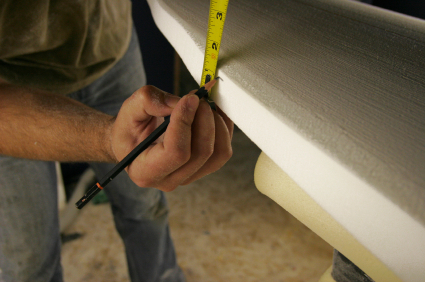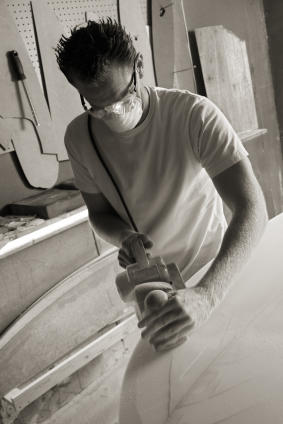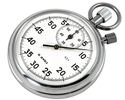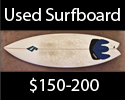Advanced Tips
How To Get A Custom Surfboard
 As a surfer you want a board that is a good fit for you. Of every board imaginable, you want one that is going to be the best fit for you as an individual. Not only should it take into account your size but also the details that make you unique. And when you do find the best board for you, the result will be a better surfing experience. The easiest way to get a board that is the best fit for you is to have one made specifically for you. Rather than searching the racks of your local surf shop you can have a custom shaped. The best part is, getting a custom surfboard isn't as difficult as it sounds.
As a surfer you want a board that is a good fit for you. Of every board imaginable, you want one that is going to be the best fit for you as an individual. Not only should it take into account your size but also the details that make you unique. And when you do find the best board for you, the result will be a better surfing experience. The easiest way to get a board that is the best fit for you is to have one made specifically for you. Rather than searching the racks of your local surf shop you can have a custom shaped. The best part is, getting a custom surfboard isn't as difficult as it sounds.
The first thing that comes to mind when you hear the word custom is probably the word expensive. Get that out of your head. Custom furniture is expensive, a custom paint job is expensive but custom boards are really not that expensive. The materials used, time involved and shaping process are almost identical to that of any hand shaped surfboard, the only difference is that the shaper is taking time beforehand to plan the board to fit you as opposed to making a stock model that will go to a shop. And because you are buying directly from the shaper, there is no middleman. A custom shortboard will run you between $500-600 while a longboard might cost between $800-900. Those rates are on par with what you would pay in a store but you are getting a board tailored for you.
How To Find A Shaper
Now that you have decided to get a custom board, you will need to find someone to shape it. Your decision here will effect the whole process. A good shaper can make you a beautiful board in a few weeks but a bad one might take months to finish your board or shape you something that just doesn't work. How you go about finding and screening the shaper will determine how enjoyable the next stages are. Take your time and be thorough.
To begin, you will have to do your research and locate a few local shapers. A good place to start is by asking friends or doing a Google search. Shapers range from backyard hobbyists to professionals with their own brands. The former tend to be less expensive but also less experienced while the latter might cost more, but they have spent much more time in the shaping bay. Of course individuals are all different, and you never know what you'll come upon, you might find a friend of the family that has been shaping boards out of their garage for 30 years who will make a great board for you at cost.
The first thing to look for in a shaper is what types of boards they shape. Some shapers are specialized and make one type of board very well. If you are looking for a shortboard, find someone that has shaped a lot of shortboards. They will have gotten feedback from all of the surfers they shaped board for and the result will be a more fine tuned board for you.
The next thing you want to do is find out how people like the shaper's boards and their experience working with the shaper. Check out their website to see if they have any reviews up or search for their models in the SurfScience Board Rack. Ask around and see if they finish boards on time and if they deliver on what they promise. Once you are confident that they can make the type of board you are looking for and that they will act professionally, its time to contact them.
Talking To A New Shaper
 When you go talk to a new shaper, he should begin by asking you questions. If he immediately sizes you up to a chart and say they'll shape a board that all of their team guys are ripping on, turn around and leave. The whole point of getting a custom board is having it customized. A shaper will have to know something about you to be able to customize a board and so they should start asking questions. There are a lot of guys that have been burned because they went to a shaper who didn't listen to them and got back something completely different that what they wanted. Make sure your shaper asks questions and listens to you.
When you go talk to a new shaper, he should begin by asking you questions. If he immediately sizes you up to a chart and say they'll shape a board that all of their team guys are ripping on, turn around and leave. The whole point of getting a custom board is having it customized. A shaper will have to know something about you to be able to customize a board and so they should start asking questions. There are a lot of guys that have been burned because they went to a shaper who didn't listen to them and got back something completely different that what they wanted. Make sure your shaper asks questions and listens to you.
Some of the information they will be trying to find out includes:
1. Your height ,weight and body type
2. The waves you surf
3. Your surfing experience
4. The board you're currently on
5. That direction you want to take your surfing
Did you notice how all of those have the word "you" in them. If you come prepared, you can speed up the process. Working with a local shaper makes #2 easy because they will know the breaks you go to. For #3 a good idea is to bring in a few pictures of you surfing or even some video. Sometimes it is tough to be honest about our surfing level. Pictures and video don't lie. Finally for #4, the easiest thing to do is to bring in your current board. As you talk about what you are looking for they will be able to identify why you like and dislike certain characteristics of your current board. It gives them a place to start from and makes your comments relative to a physical shape rather than abstract thoughts.
The more detailed the questions, the better fit your board will be. Think about this, a board for the winter in Nor Cal will be much different that a board made for Hawaii. Even if they will be ridden in similar waves, a 5mm wetsuit can add 10lbs, which can really change the performance of a board.
After finding out all of that info the shaper will be able bring up the whole catalog of boards in their head and follow a path to find a good board for you. Their internal thought process will resemble a tree, as they start at the base they ask questions and branch off to a category of boards they think will work best, then each additional question fine tunes the idea until they have it pinned down.
Red Flags For Working With Shapers
The following are red flags that might pop up when looking for a shaper. If too many of these pop up, you might want to consider working with another shaper.
1. They don't ask questions about your level of experience
2. You feel pressure to buy a certain model you don't really want
3. Their shop is completely disorganized and messy (shaping bays tend to have a lot of dust, but if the place looks like a tornado hit it, you have to wonder if your board will get misplaced or forgotten about)
4. You're not stoked. It is their job to get you excited about your new custom creation
5. The cost seems really low or really high
Negotiating Price
A custom shortboard should cost about $600 while a custom longboard might be around $800. If you have a little less there are a few ways a shaper can lower the cost and those usually involve using less expensive materials. If you want to spend a little more, you can get some additional features like channels, a thicker glass job, resin color, pin stripes etc.
As far as discounts go, surfboards don't have a high markup and shapers as a group don't typically make a ton of money. If you are looking for a new board but don't have a lot of money be up front about it from the get go. Tell them how much money you have and see what they can do to work with it.
Whatever you do, don't try and haggle a deal just so you can tell your friends you got a good deal. It is not very classy. Shapers are in business and have to look at profit. Cutting what you spend will usually result in one of the following three things: lower quality materials, a rushed process or a shaper that won't want to work with you again. By making sure you're paying enough, the shaper will know they can put in the proper amount of time imagining the board without loosing money on the project.
If you're really tight on money, it never hurts to ask if there are any old team boards sitting in the back. Sometimes there will be a board that one of the team's guys decided he wanted a bit bigger and its sitting in the back of the shop. Those can be a great deal. You might be at a similar level to one of the guys that just outgrew a model and the shaper will know if it will work well for you. It never hurts to ask.
What To Do After Getting Your Custom Board
The first thing to do is bring them a six pack to thank them. Let them know how stoked you are and if the board is ready to go, paddle out. Once you've ridden it a bit, shoot back some feedback. Positive feedback is always good to hear but any thoughts help the shaper lock down their ideas. It will confirm for them how they thought the board would handle for you and how it actually does, which will help when you get another board made. Finally, if you're happy with the board, tell your friends. By spreading the word you're helping make sure quality shapers can earn a good living.
Conclusion
Getting a custom surfboard is the best way to ensure you are riding a board that is a proper fit for you. Not only will it be a good match for your size and surfing level but it will be designed with the breaks you surf in mind. Custom surfboards are not too much more expensive than a board off the shelf but the end result is tailored. Make sure to do your research and work with a shaper that will deliver a quality board in a decent amount of time and that the shaper makes the board after asking you questions and listening to the answers.
SurfScience supports local shapers and hand shaped boards. New progressions come from the creative minds of individuals that have devoted their lives to the craft. Go get yourself a custom board. The difference will be obvious.















1 Comment